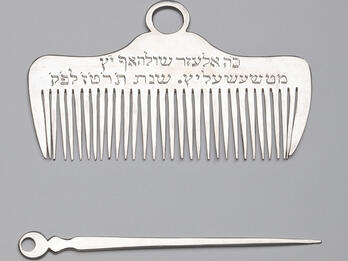Paper Cut—Mizraḥ
Moses Michael Rosenboim
1848
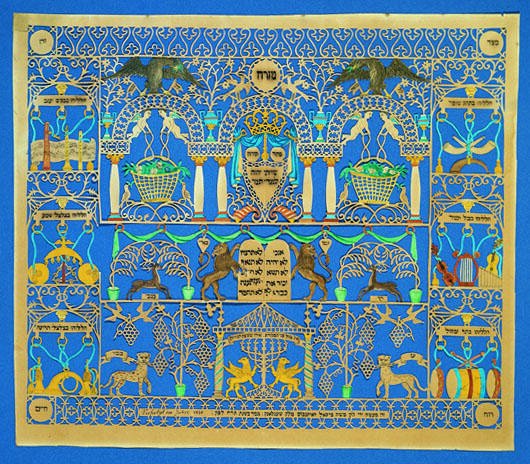
Creator Bio
Moses Michael Rosenboim
Paper cuts have long been a popular Jewish folk art. Given the widespread availability of paper in Europe by the mid-nineteenth century and the simplicity of the tools required in making paper cuts, this craft could be practiced even by those with little means or few skills. In addition to being aesthetic objects, paper cuts also fulfilled a religious purpose and were often connected to a particular festival, event, or ritual. Paper cuts have been a tradition of Jewish folk art, with the earliest record dating to the fourteenth century. Within Eastern and Central Europe, several extant examples dating from the eighteenth century onward illustrate the development of the art form in its use for interior decoration. An 1848 mizraḥ created by the artisan Moshe Michael Rosenboim, located in Schönlanke (Trzcianka, Poland) is a masterful example of a Judaic paper cut. Mizraḥim are decorative objects that are hung on the eastern walls (facing toward Jerusalem in European areas) of Jewish homes and are used as an aid to prayer as well as a symbol of divine protection.
Places:
You may also like
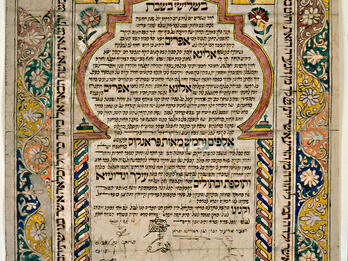
Ketubah (Oran)
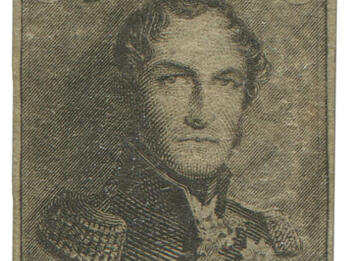
H. M. King Leopold I Stamp
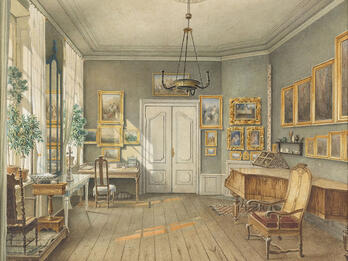
The Music Room of Fanny Hensel
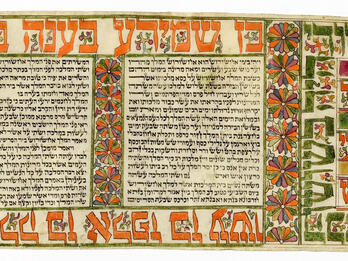
Esther Scroll (Baghdad)

Tombstone of Torah Scholar
